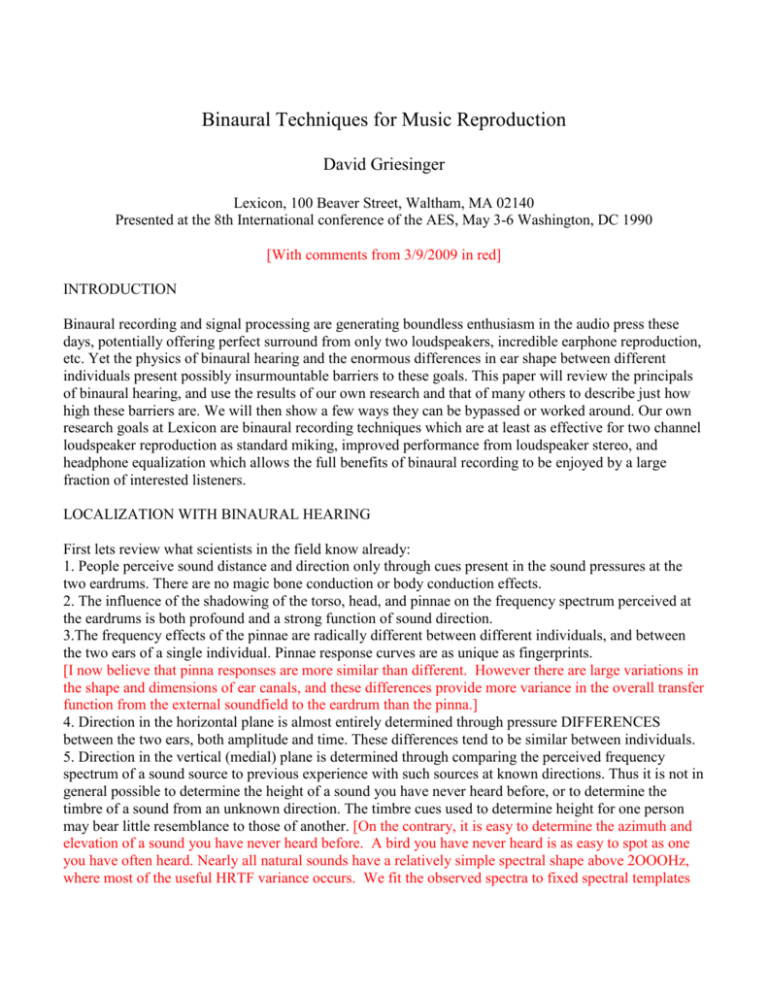
Besides having distinct outer ears, our skulls are all different. The Head-Related Transfer Function (HRTF) is the combined acoustic influence of a person’s head on their hearing. If it comes at the left mic or ear before the right, it’s coming from the left. A sound scooped up by a spaced array (or our ears) gets to both mics (or eardrums) at the same time.

For example, unlike coincident mic arrays such as XY or MidSides, which always receive sound spaced arrays rely on the chance of sound arriving at the two mics at separate times. With one on each side of our heads, our listening is basically the same as a spaced Omni stereo mic array. All Earsīinaural recordings are simultaneous recordings that use the human hearing mechanics. It is more relevant than ever today because headphones are the dominating consumer listening medium. But also because binaural recordings require headphones to experience it completely, it had limited applications. The recording business appears to rediscover binaural audio every decade. Binaural recordings attempt to mimic the changes between the right and left channels of audio in real-time. Sound localization is the term used to describe this type of directional information. Because of the difference in time and volume, it is possible to determine where the sound originates from! Sound Localization When our brain gets this information, the real magic happens. Interaural time and level discrepancies are terms used to describe the minor changes in time and intensity experienced by the ears during a single conversation. One ear will hear the sound first, and it will be louder and more intense. Because of the increased distance between the ears, each ear will perceive the sound slightly differently. In real life, a sound that starts on our right side must travel a longer distance to reach our left ear before we can hear it. The natural space makes this achievement possible between our ears and our heads, as well as variances in time and intensity. Within seconds of acoustic pressure entering our ears, we can tell what they are, what their pitch is, and where they are coming from.

When the three of them work together, they create rapid feedback in reaction to sound. The interaction between our ears, head, and brain is a fascinating subject to learn more about. You will need to do some research on human hearing to comprehend how this works.

This is because binaural recordings accurately produce what surroundings sound like to humans. In this way, you feel as if you are physically present in the recorded surroundings. You can hear sounds all around you while can pinpoint where they are coming from and where they are going. When you listen to binaural audio, it immerses in a three-dimensional soundscape within your skull. Sound for Virtual Reality and Augmented Reality.Sound Design for the Video Game Industry.


 0 kommentar(er)
0 kommentar(er)
